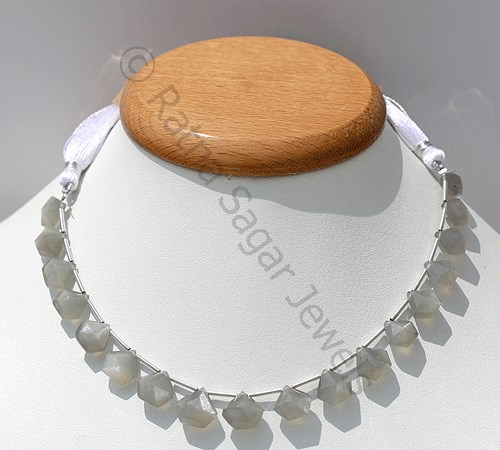Milky white gemstones with colourful sparkles symbolise the love for translucent dazzlers. Yes, glassy and clear gemstones like diamond, garnets, rubies, sapphires and emeralds remain the top eye-catchers. But there is a certain attraction that makes opals, moonstones and agate very popular. The optical phenomenon of adularescence is what renders these gemstones their enticing beauty.
What is an adularescent gemstone?
Crystals exhibiting the Schiller effect are called as adularescent stones, which is very similar to the labrador essence and adventure scene. Adularescent gemstones exude a milky and bluish glow originating from the diffused structure within the crystal. The schiller seems to move within the stone, and hence gives an effect of the light source moving as well. Orange and blue lustres are commonly seen in the gemstones.
Why adularescent?
The name ‘adularescence’ is derived from the gemstone called Adularia. Adularia itself derives its name from the location where it was first discovered. Adularia is orthoclase potassium-enriched feldspar found in Adula Massif, Ticino (Tessin), Switzerland in 1780.
The degree of schiller effect in the gemstones other than Adularia is a highly varying and hence remains a scattered phenomenon. In non-Adularia gemstones, schiller effect appears along with ‘girasol effect’and opalescence. Some gem experts like to connect adularescence with indistinct bands of chatoyant effect. In other words, adularescent gemstones are likely to showcase cat’s eyes effects and asterism.
Adularescent Moonstones:
Labradorescence and adularescence are related terms as far as optical phenomena are concerned. Both of them are seen in moonstone Gemstone and Labradorite in equal intensity. The similarity arises due to their origin from feldspar.
Moonstone has two feldspar minerals in it- orthoclase and albite. Adularescent moonstones exhibit intermingling of the minerals and result in a new ingrown stacked in alternate rows. The light scatters randomly between the thin lines and layers causing a blue sheen. When the moonstone gemstone beads are viewed in different angles, the misty light also rolls in action.

How to check for a real Moonstone:
Moonstones are approved of their originality by checking three factors:
- Background colour
- Surface colour
- Sheen orientation
The adularescent gemstones are semi-transparent and colourless, with sheens bearing shades of blue, silver and rose. Rainbow moonstone show multiple colours like green, yellow and brown-grey. In terms of pricing, brighter the shade, higher will be the cost. High valued moonstones exhibit a 3-dimensional depth in blue shade. Blue moonstones necessarily command a higher price than milky and transparent adularescent gems.
How cut makes a difference?
Moonstones are often shaped in the beads and balls, stranded in necklace and bracelets. The adularescent moonstone is cut in cabochon that multiplies the sheen and clarity of the colours. Oval moonstones cut in cabochon remains top collections, apart from the Fancy Cut and Pointcuts with the square base.
For uniform adularescence effect, moonstones are never given a long flat base. They diminish the effect and also take away the sheen and clarity. In short, flat based moonstones are not as attractive and glittery as the cabochon ovals.
Save
9ea2cb49-c974-49df-8156-fcd23822d689|0|.0|27604f05-86ad-47ef-9e05-950bb762570c
Tags
: Moonstone Gemstone Beads . Grey Moonstone Beads . Grey Moonstone Beads India . Moonstone Beads India